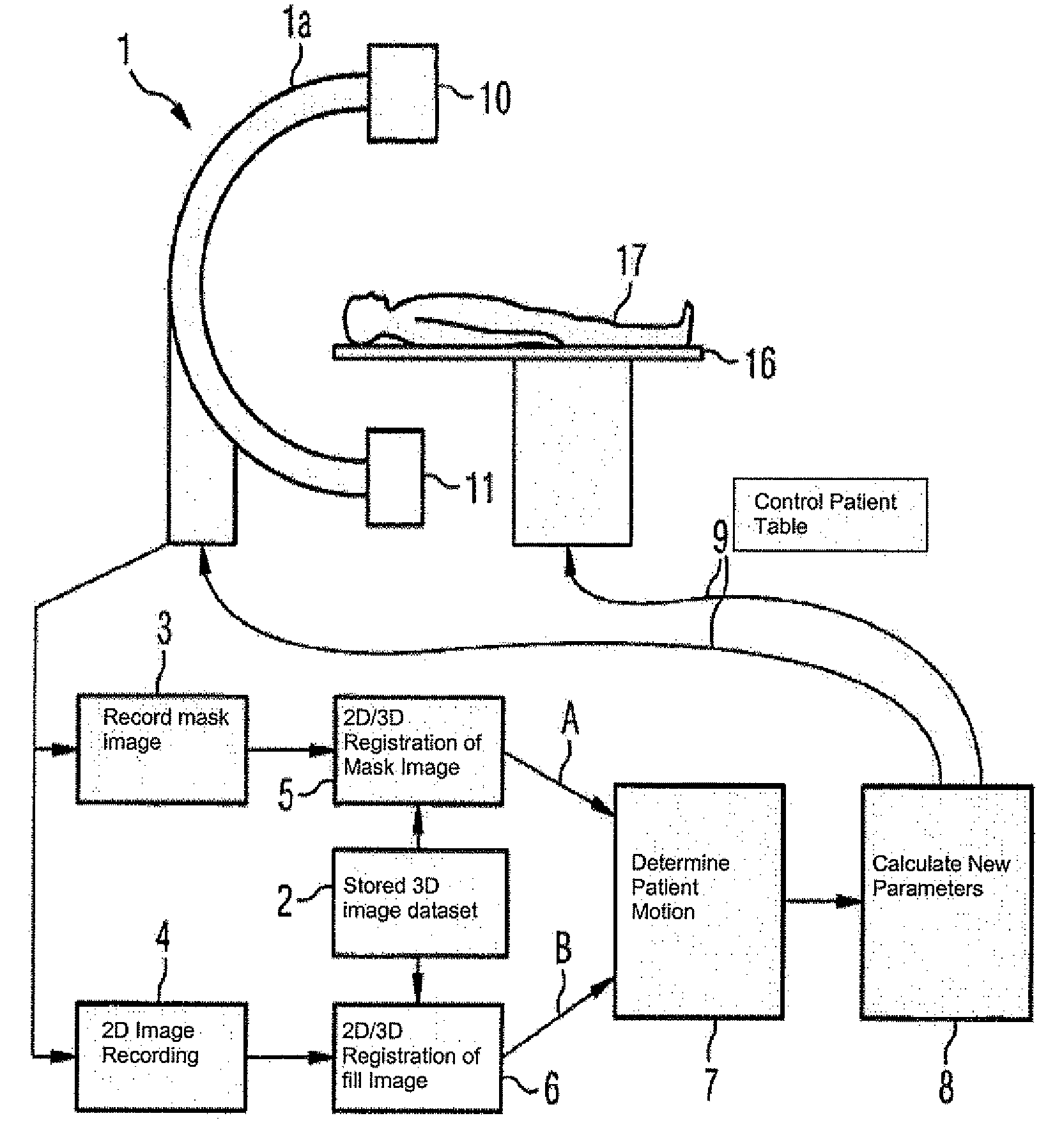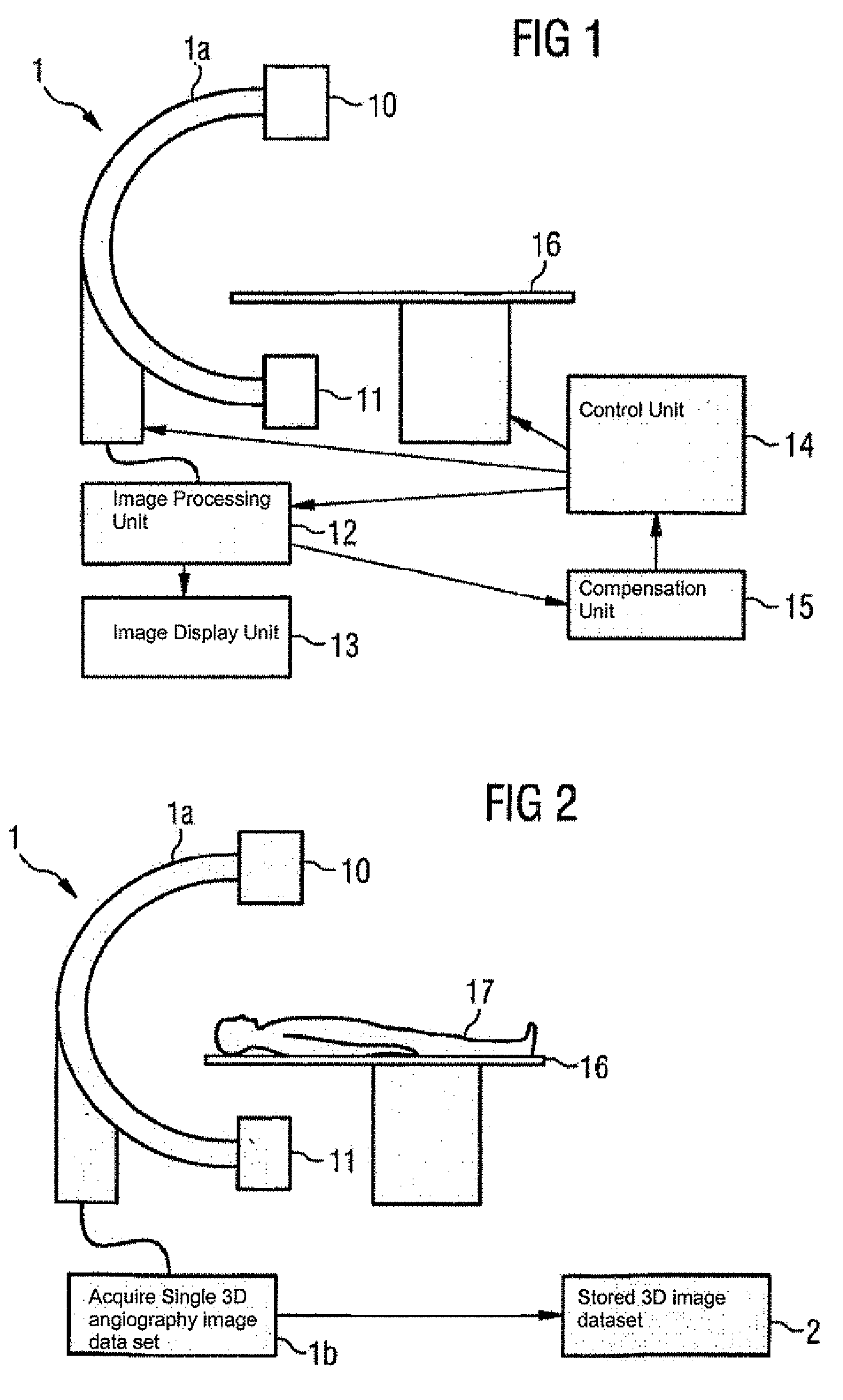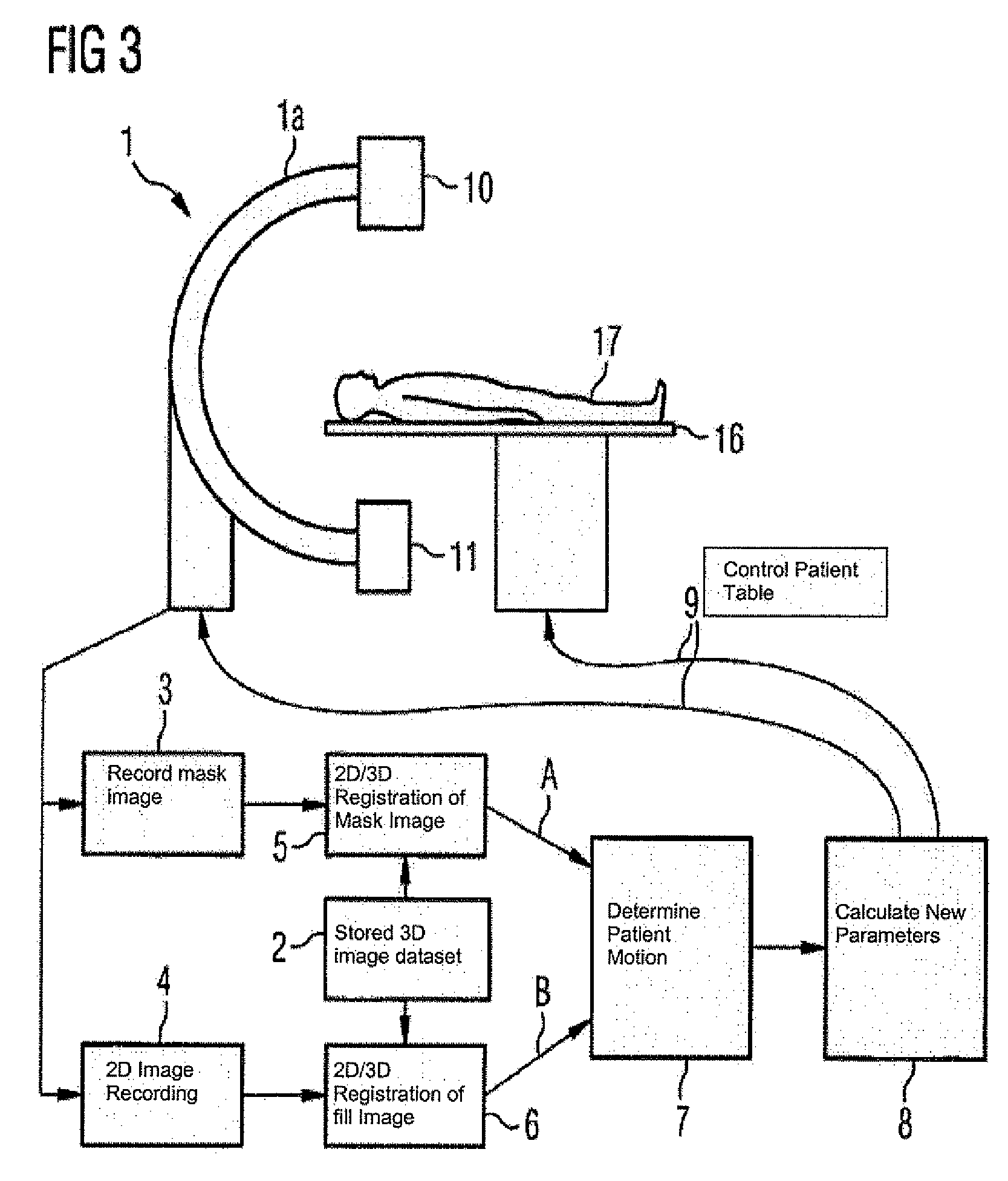Method and medical imaging system for compensating for patient motion
a technology of medical imaging and patient motion, applied in the field of medical imaging system for compensating patient motion, to achieve the effect of reducing the time outlay of the operator and improving the image results
- Summary
- Abstract
- Description
- Claims
- Application Information
AI Technical Summary
Benefits of technology
Problems solved by technology
Method used
Image
Examples
Embodiment Construction
[0030]The present method is described below with reference to an X-ray angiography unit for neuroradiology applications. The method can of course also be used in other fields, in which digital subtraction angiography and / or road mapping are used. The present method can also be used with other techniques for medical imaging, in which series recordings have to be taken and related to each other.
[0031]In the example below the embodiments are restricted to the instance of the correction of head motion of a patient. As the head can be considered approximately to be a rigid element, the motion correction is restricted to the six degrees of freedom of translation and rotation of a rigid element in the three-dimensional space.
[0032]A neuroradiology X-ray angiography unit 1 is used for image recording, as shown schematically in FIG. 1. The X-ray angiography unit 1 includes a C-arm 1a that can be rotated about two axes, to which an X-ray tube 10 and a detector 11 opposite the X-ray tube are a...
PUM
 Login to View More
Login to View More Abstract
Description
Claims
Application Information
 Login to View More
Login to View More - R&D
- Intellectual Property
- Life Sciences
- Materials
- Tech Scout
- Unparalleled Data Quality
- Higher Quality Content
- 60% Fewer Hallucinations
Browse by: Latest US Patents, China's latest patents, Technical Efficacy Thesaurus, Application Domain, Technology Topic, Popular Technical Reports.
© 2025 PatSnap. All rights reserved.Legal|Privacy policy|Modern Slavery Act Transparency Statement|Sitemap|About US| Contact US: help@patsnap.com



